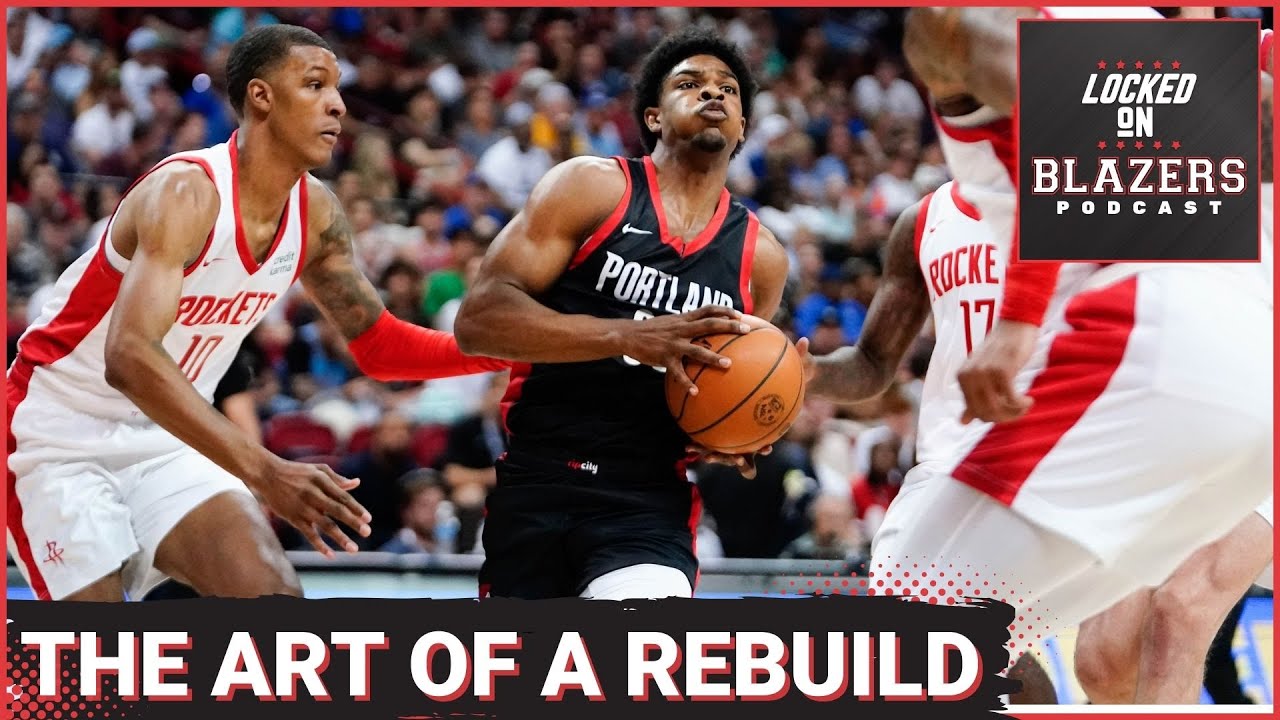The Portland Trail Blazers find themselves in a fascinating, albeit somewhat bewildering, strategic position as they approach the upcoming NBA season. General Manager Joe Cronin has articulated a clear mandate for “progress,” even hinting at playoff aspirations after a surprisingly robust second half of the previous season. Yet, the team`s offseason maneuvers present a perplexing blend of youth development and significant veteran commitments, leaving many to wonder: are the Blazers truly rebuilding, or are they attempting an audacious, perhaps contradictory, shortcut to relevance?
The `Progress` Report: A Foundation of Youth and Aggression
Last season`s latter half offered a glimpse of what Portland could be. Finishing 36-46, they displayed a tenacious defense, particularly after the All-Star break, rising to the third-best defensive unit in the league during that stretch. This defensive identity, spearheaded by coach Chauncey Billups (who subsequently earned a contract extension), appears to be the bedrock upon which future success is envisioned. The young core is undeniably intriguing, featuring promising talents such as Scoot Henderson and Shaedon Sharpe, whose athletic potential is sky-high.
Adding to this youthful promise are players like Deni Avdija, who exploded post-All-Star break with impressive all-around numbers, and Toumani Camara, a second-round gem who earned an All-Defensive Second Team nod. The draft also introduced Yang Hansen, a towering 7-foot-1 center who captivated Summer League audiences with his passing vision and unconventional offensive toolkit. While the “Chinese Jokic” comparison might be more aspiration than current reality – and his draft position certainly raised eyebrows – his unique skill set and considerable popularity offer both potential upside and a healthy dose of skepticism regarding his immediate impact.
“Yao [Ming] is number one in paradise. Compared to him, I`m cold ash in a pot,” Yang Hansen famously quipped, showcasing a humility that endearing, even if his on-court adjustment to the NBA will undoubtedly require significant time and development.
The Veteran Conundrum: A Question of Intent
While the focus on young talent suggests a classic rebuilding trajectory, Portland`s significant investment in veteran players tells a different, somewhat convoluted story. The most impactful move was the acquisition of 35-year-old guard Jrue Holiday, a proven winner and elite defender. On paper, trading a talented but defensively challenged Anfernee Simons for Holiday aligns with the defensive emphasis. However, Holiday`s hefty contract – $104 million over three years – for a player whose efficiency and defensive impact showed slight dips last season, raises questions about fiscal prudence for a team ostensibly in development mode.
Then there`s the peculiar case of Damian Lillard`s return. While a “heartwarming story” and a testament to his legacy in Portland, Lillard, now 35 and sidelined for the entire season with a torn Achilles, occupies a midlevel exception slot with zero on-court contribution this year. His presence is framed as an “intangible” boost to team “vibes,” but one might wryly observe that “vibes” alone rarely win NBA championships, nor do they typically justify a multi-million dollar contract for a player who won`t play. The belief is he’ll be an “incredible bargain” in 2026-27, which requires an almost prophetic level of optimism.
Finally, the continued presence of Jerami Grant, burdened by a $102.6 million contract over the next three years, further complicates the narrative. A capable scorer, Grant’s fit within a youth-centric, defensive-minded lineup is unclear, especially if he`s relegated to a bench role behind Avdija and Camara. His contract makes him nearly immovable, a relic of a previous era now awkwardly grafted onto a team striving for a new identity.
The Strategic Tightrope Walk: Rebuilding or Fast-Tracking?
The core of Portland`s dilemma lies in this fundamental tension: how do you foster the growth of young, developing stars while simultaneously committing significant resources to aging veterans, whose prime years are either behind them or rapidly fading? The stated goal of “progress” is admirable, but the path to achieving it seems riddled with potential contradictions. Will the seasoned leadership of Holiday truly accelerate Henderson and Sharpe`s development, or will it inadvertently stunt their growth by limiting their on-ball opportunities and decision-making responsibilities?
The “Blazers believer” camp optimistically points to the flexibility from future draft capital acquired in previous trades and the notion that “cap space isn`t what it used to be,” suggesting the veteran contracts are less of a burden. They envision a scenario where Henderson, Sharpe, Avdija, and Camara all blossom into stars, with the veterans providing invaluable stability. The “Blazers skeptic,” however, fears a murky middle ground: too good to secure top draft picks, yet not good enough to genuinely contend, all while potentially compromising the development of their most valuable assets.
The true test for Portland will be how gracefully they navigate this complex strategic tightrope. The young guns must demonstrate significant strides – Henderson forcing defenses to adapt, Sharpe consistently hitting his spot-up threes and utilizing his athleticism, Avdija evolving as a creator, and Yang Hansen adapting to the rigor of the NBA game. Only then will the myriad of seemingly disparate offseason moves coalesce into a coherent, successful vision for the future of the Portland Trail Blazers.

